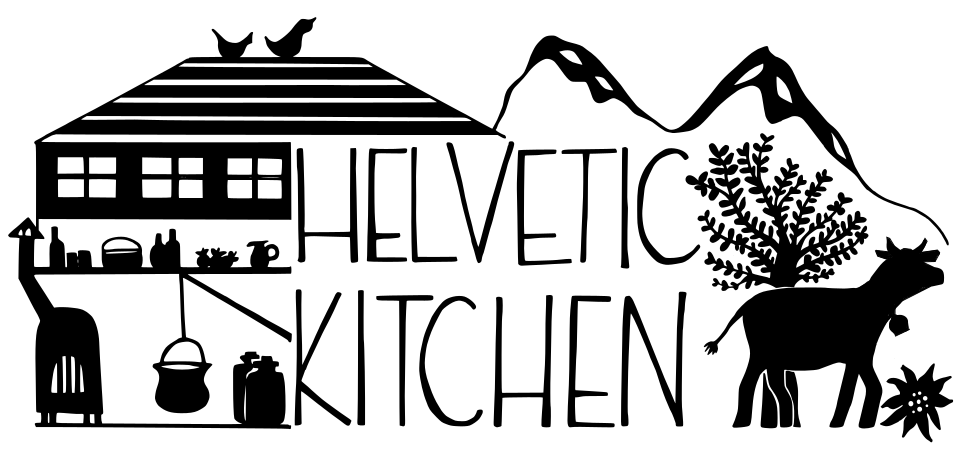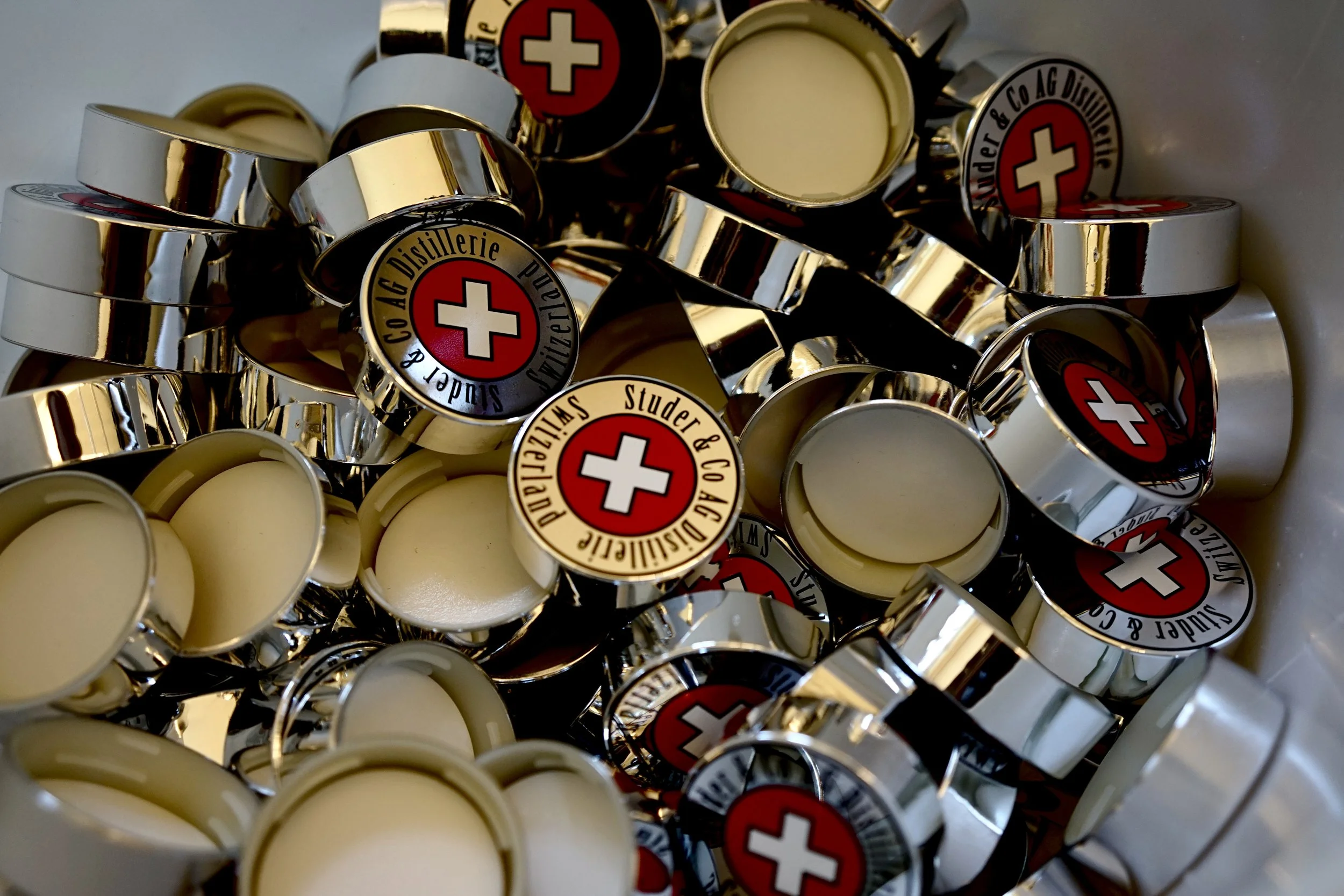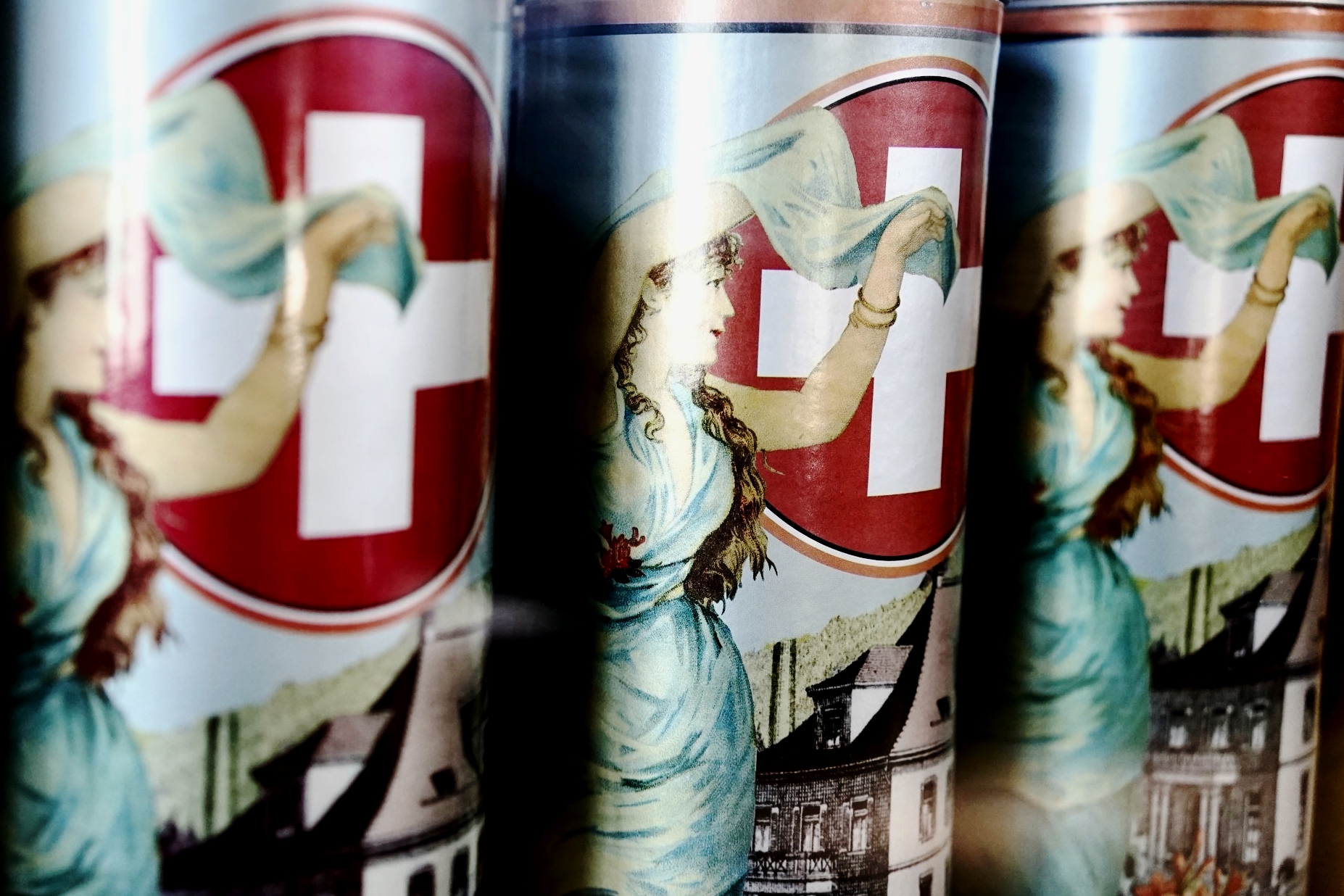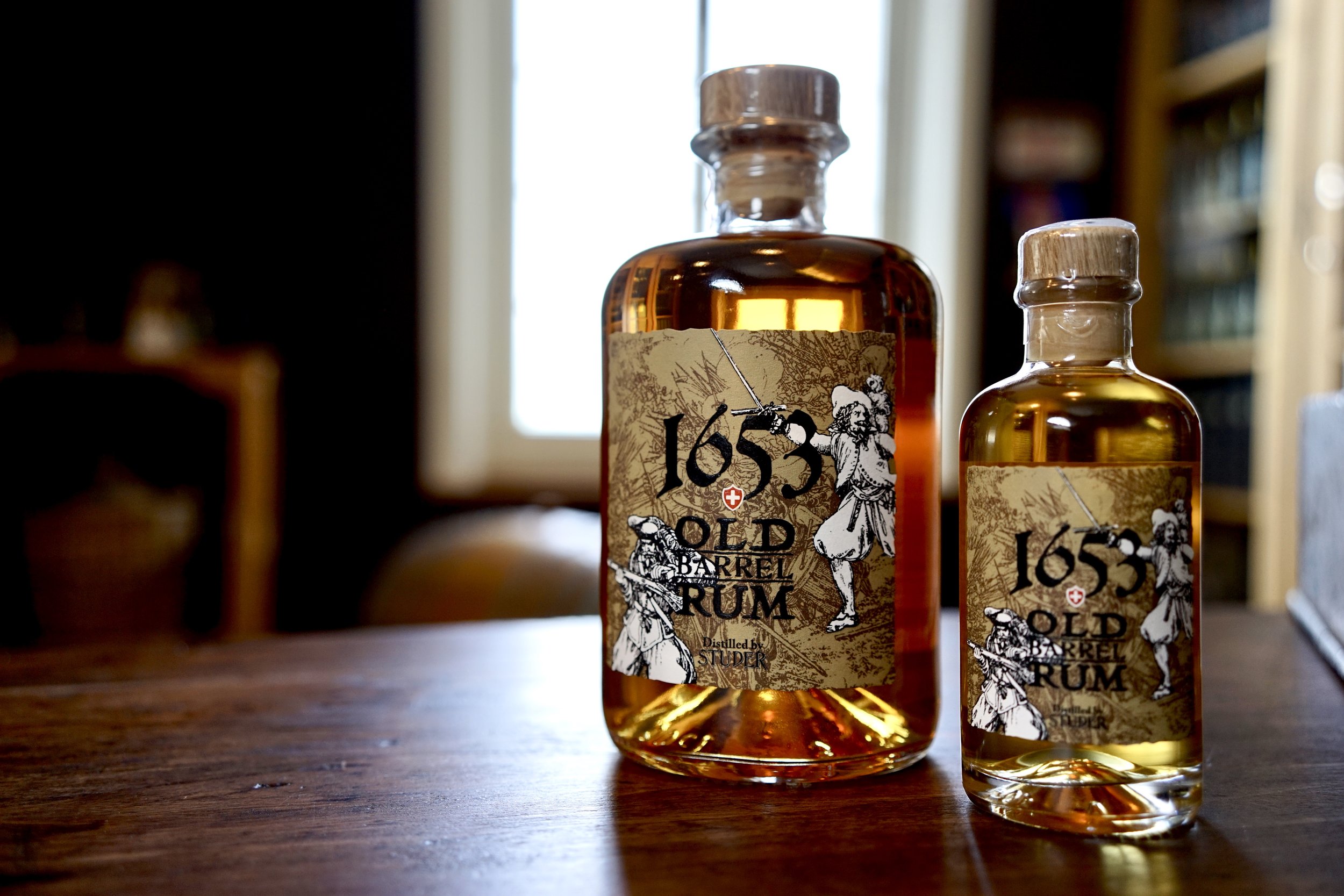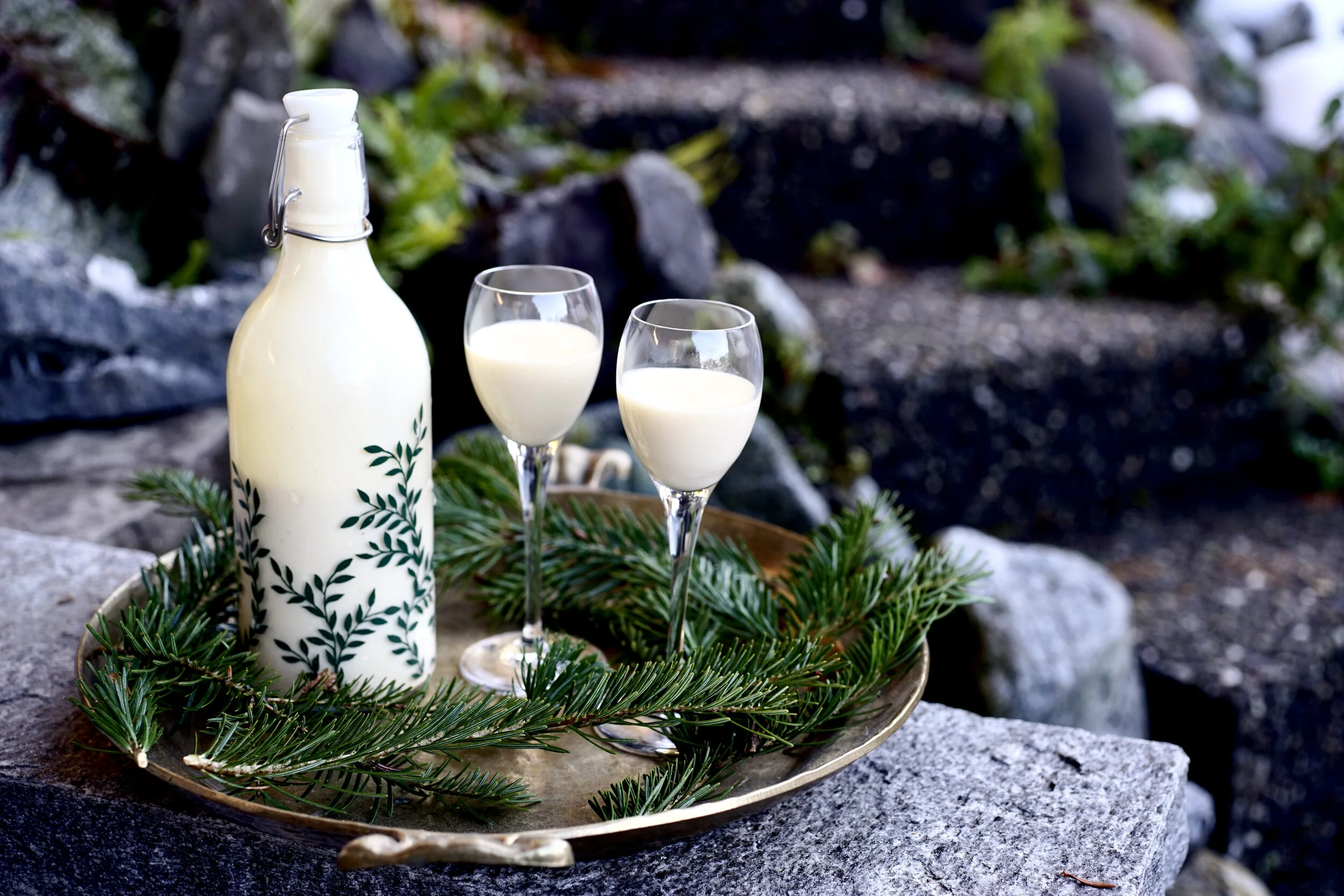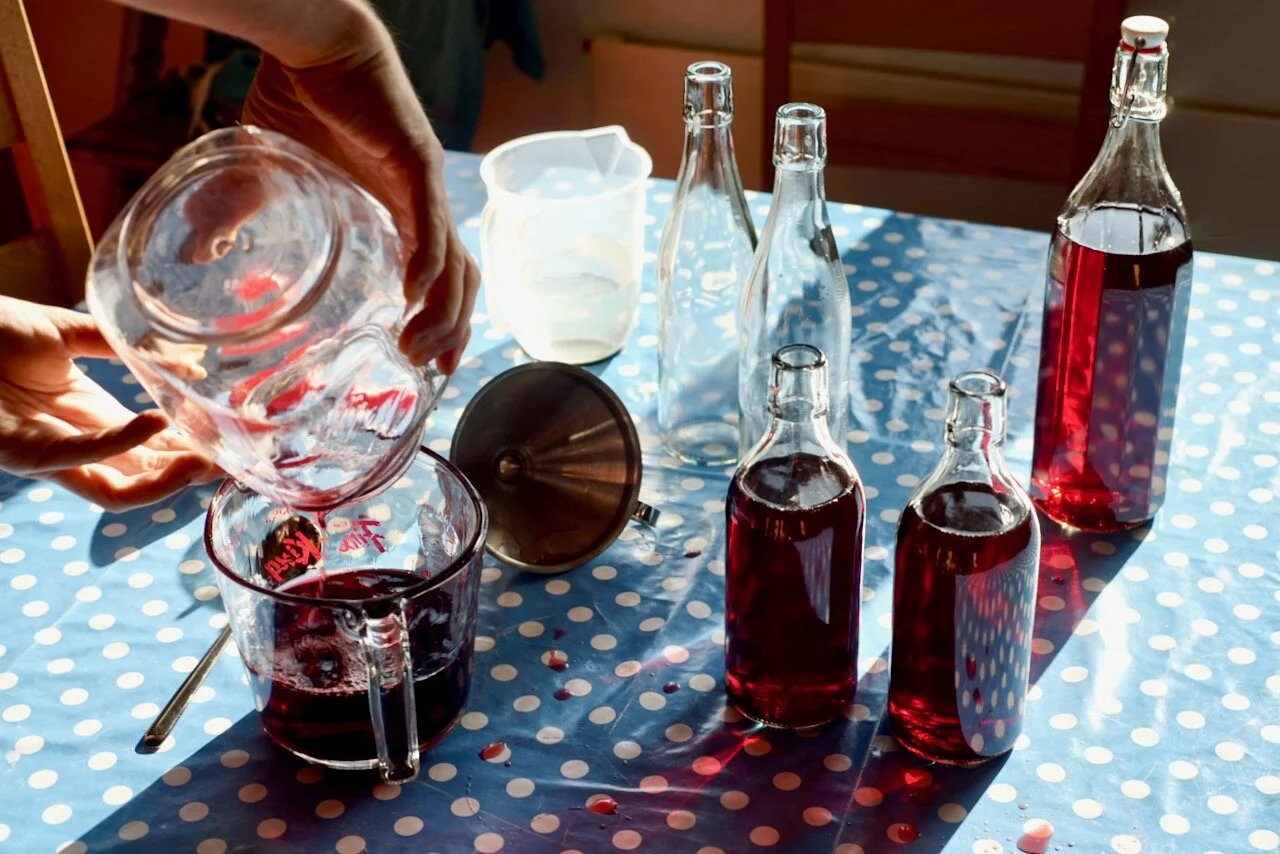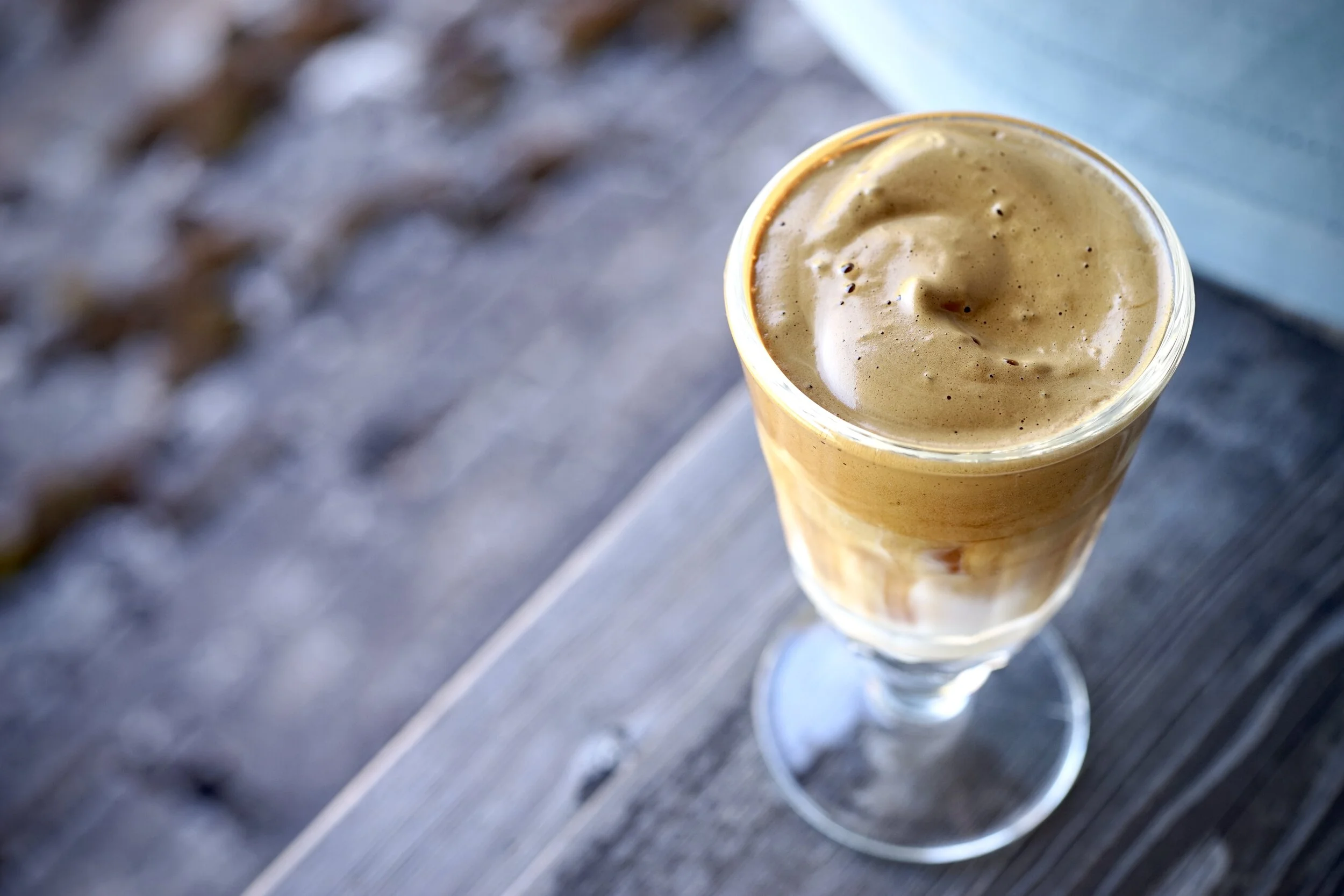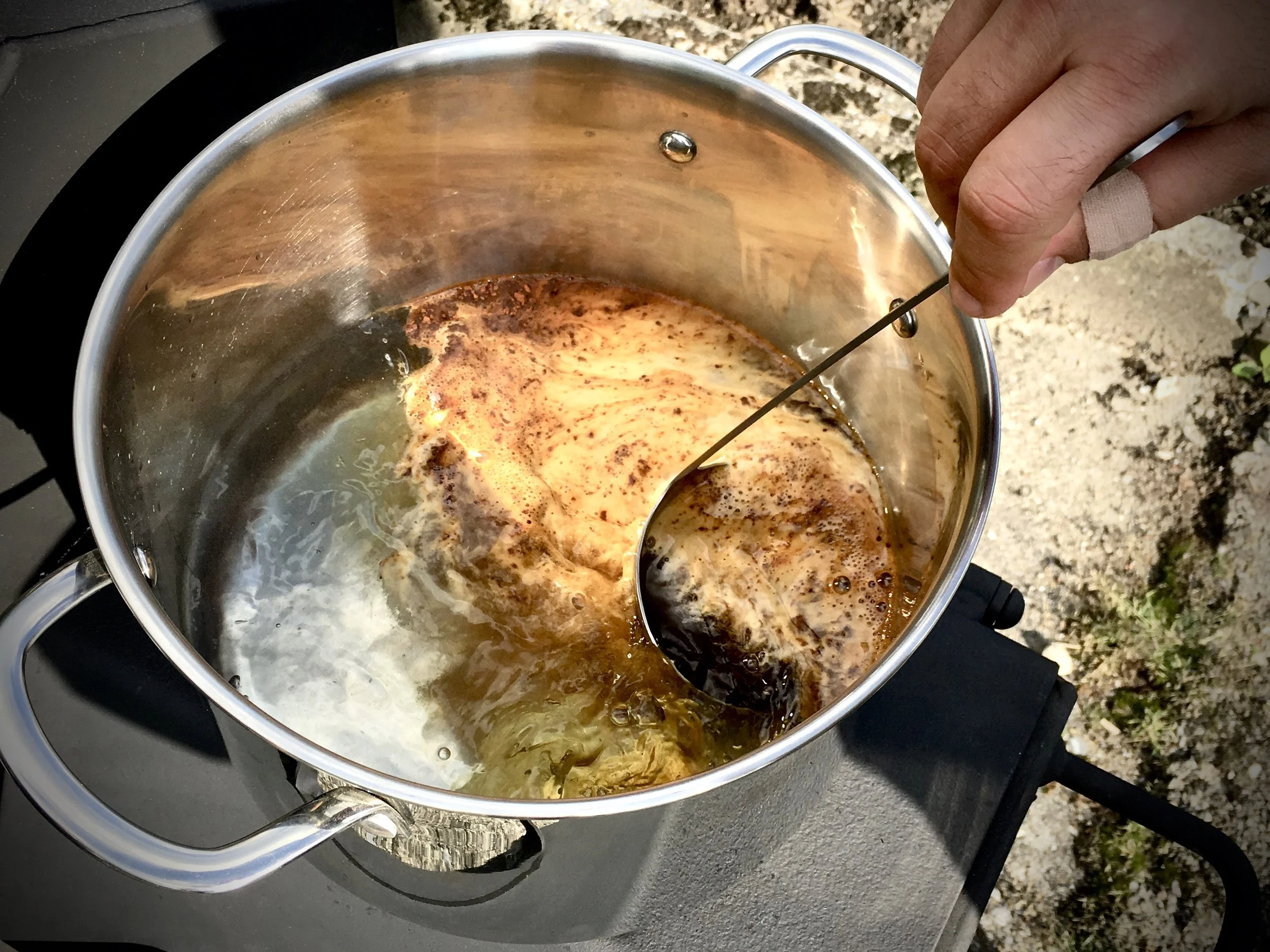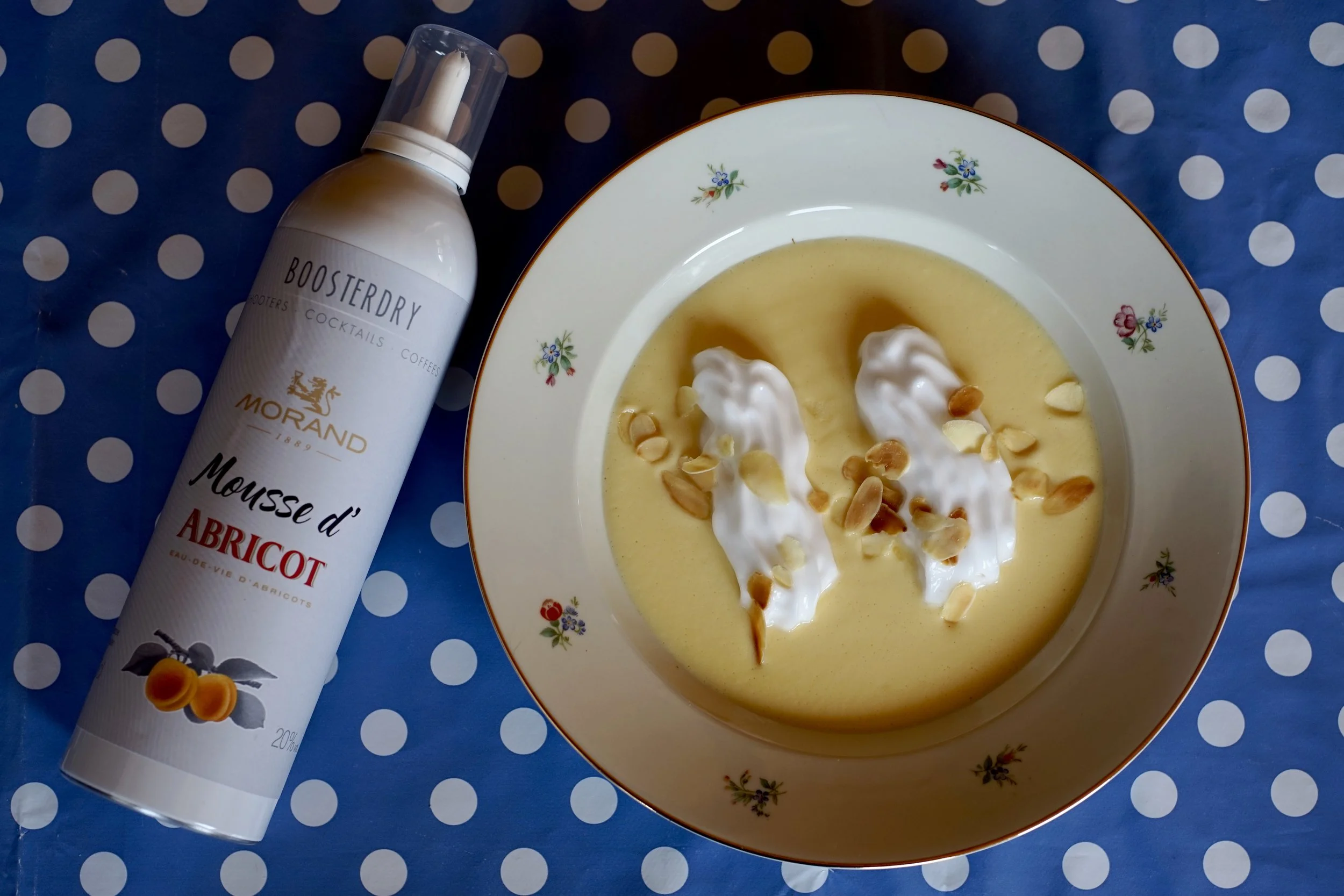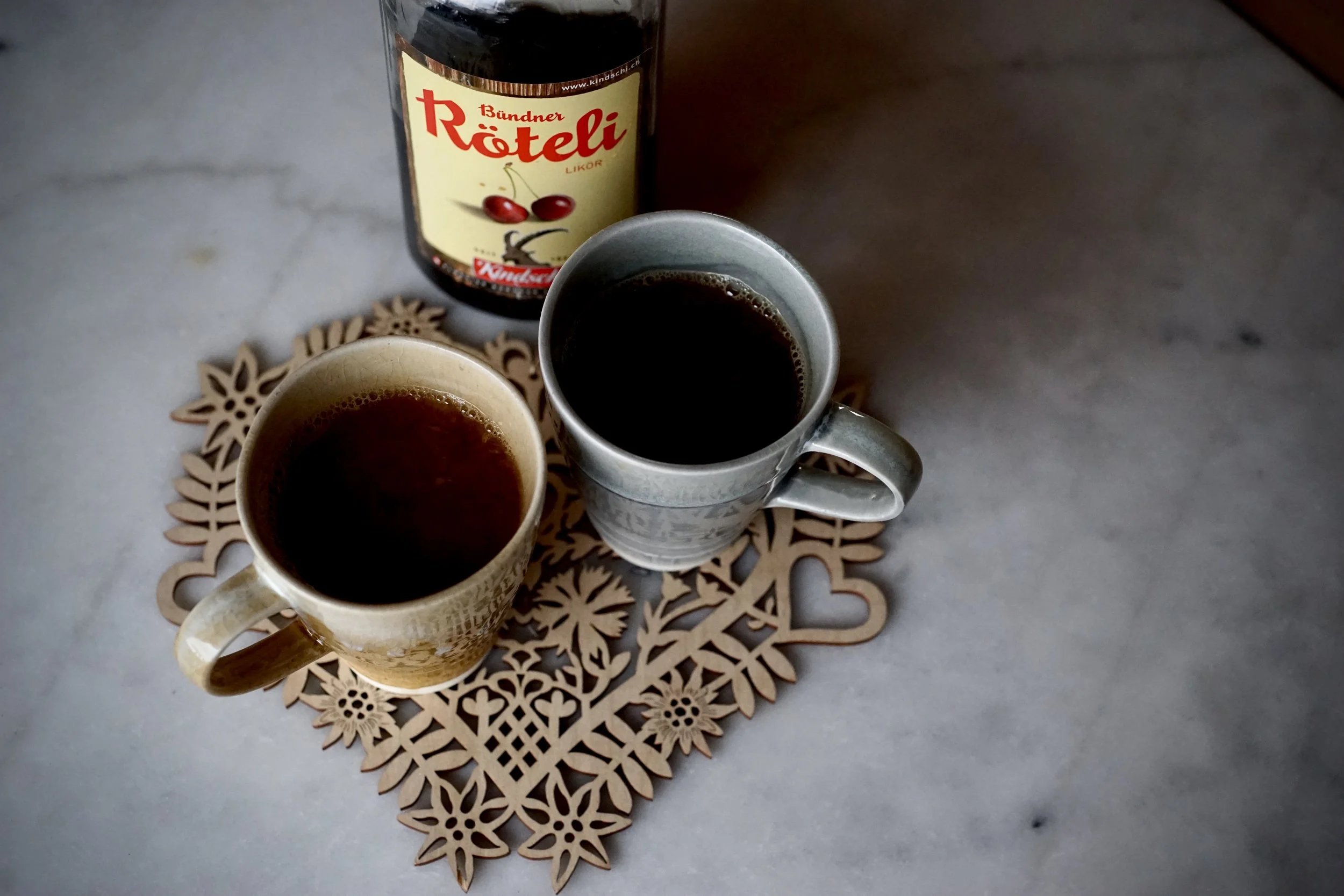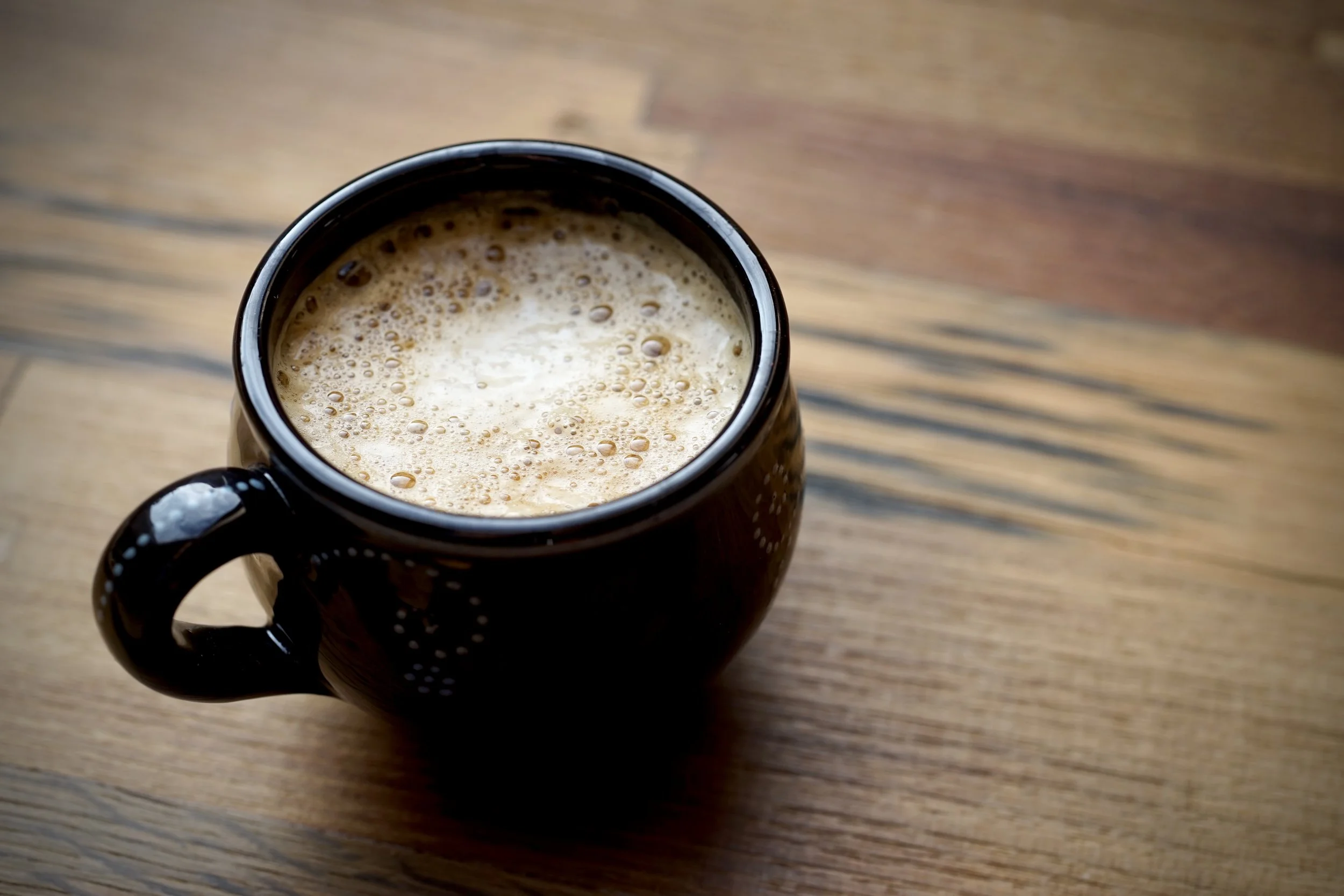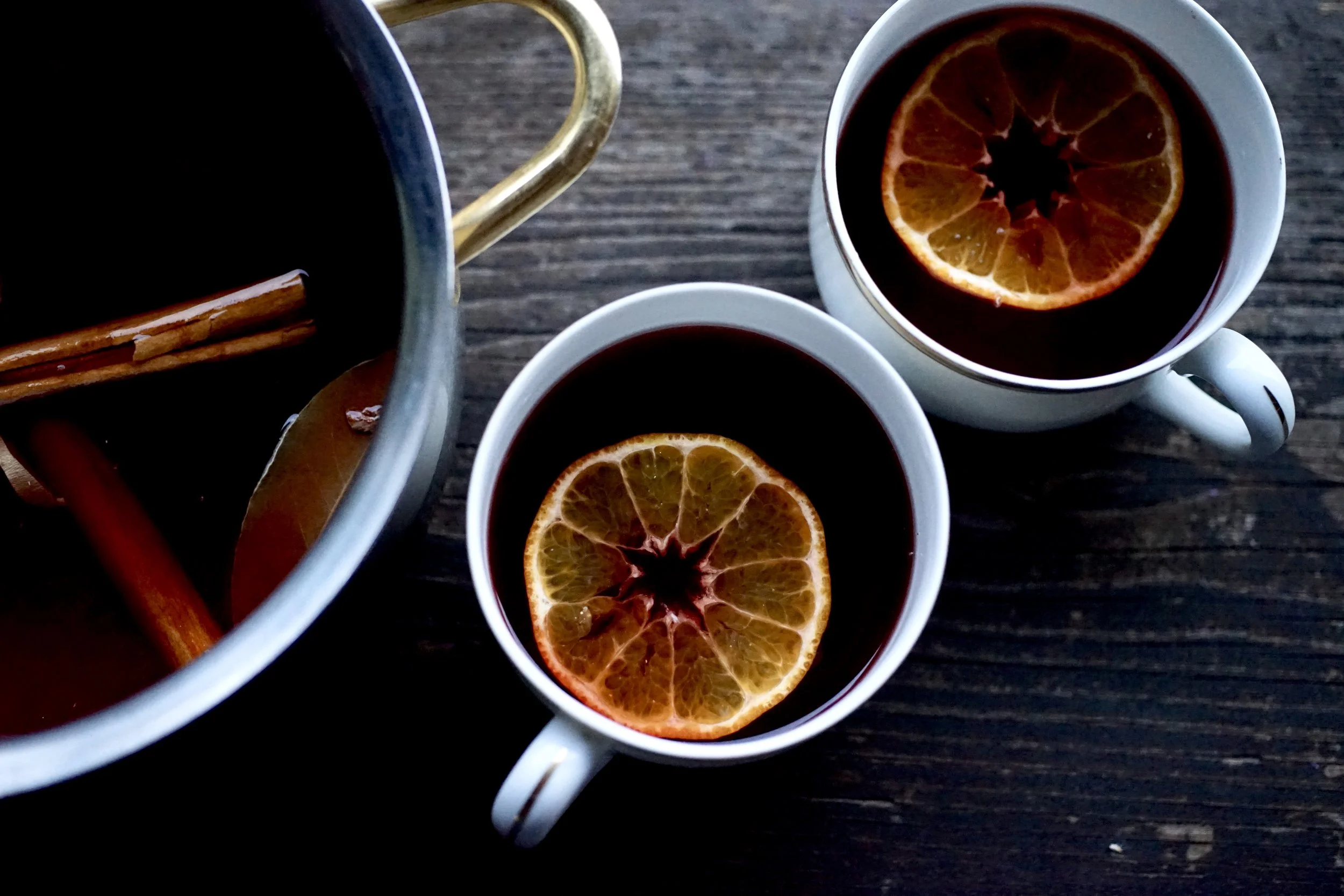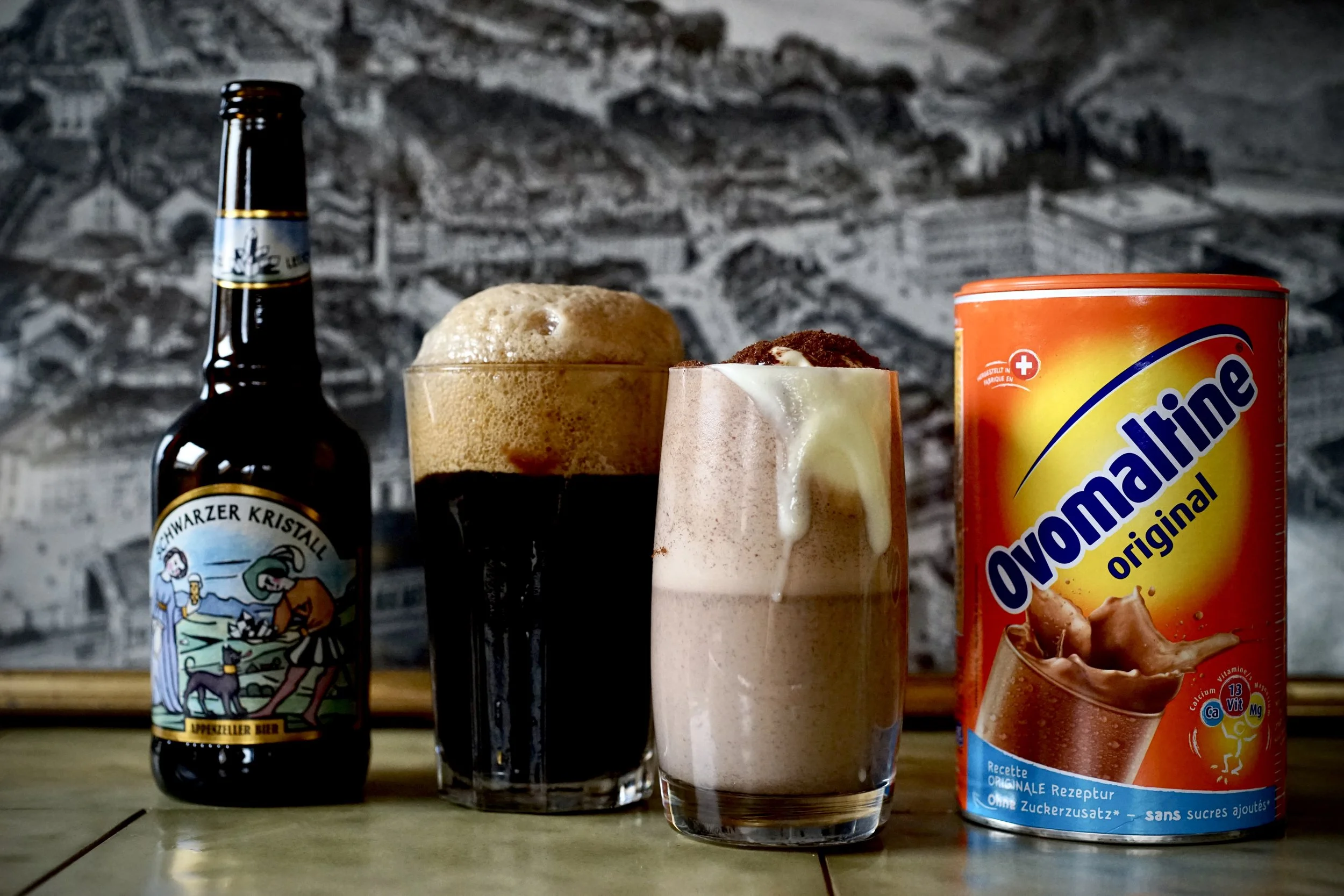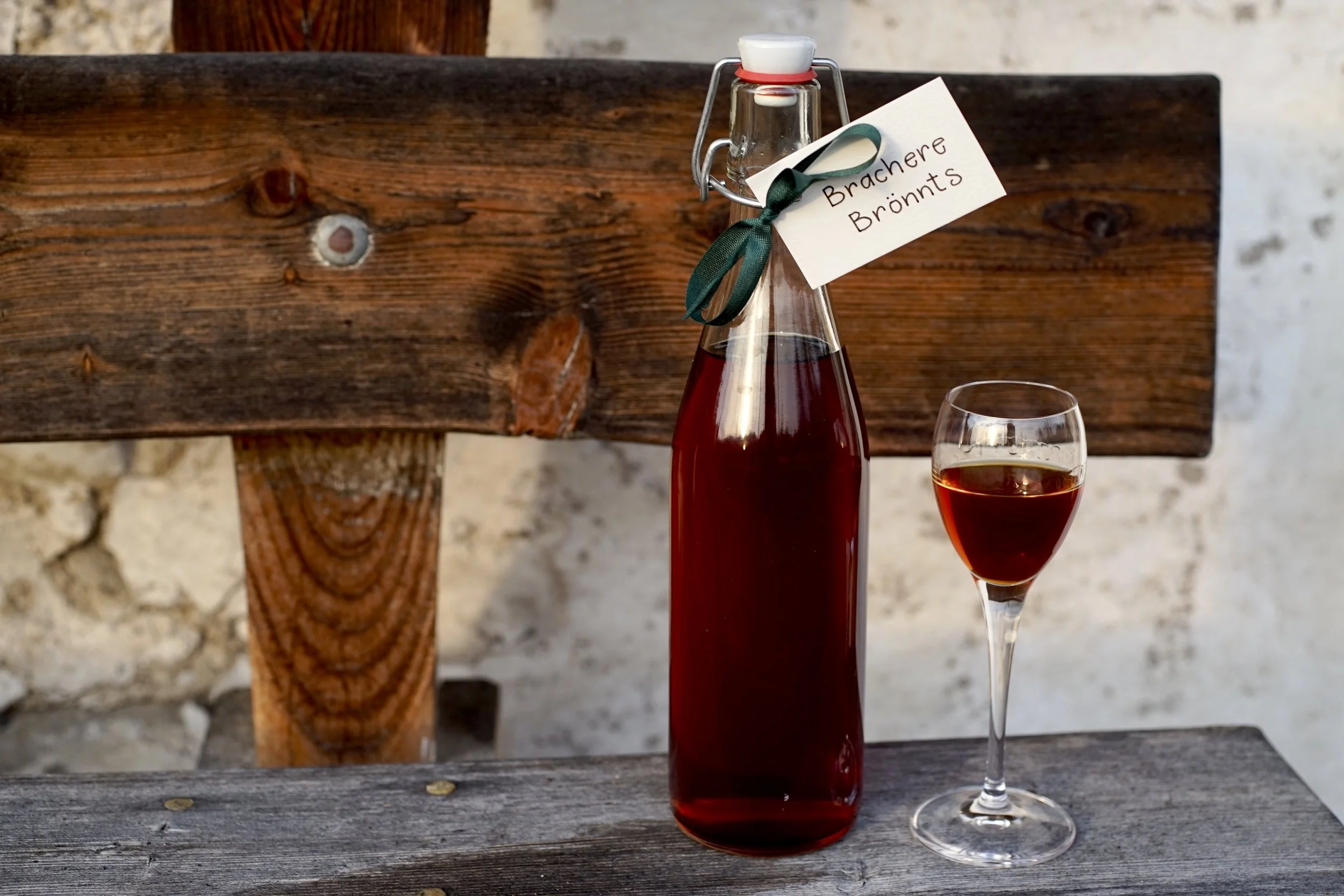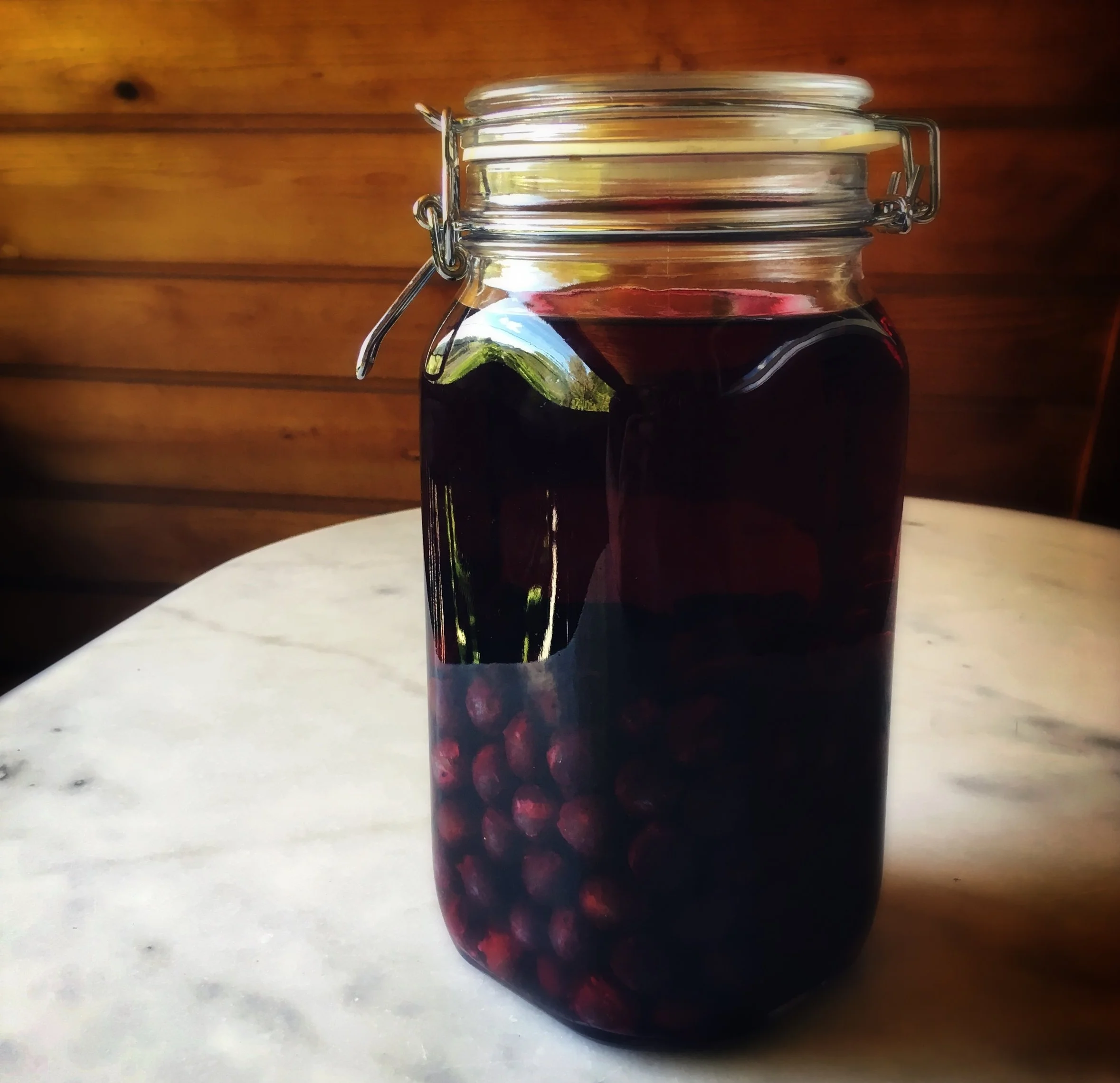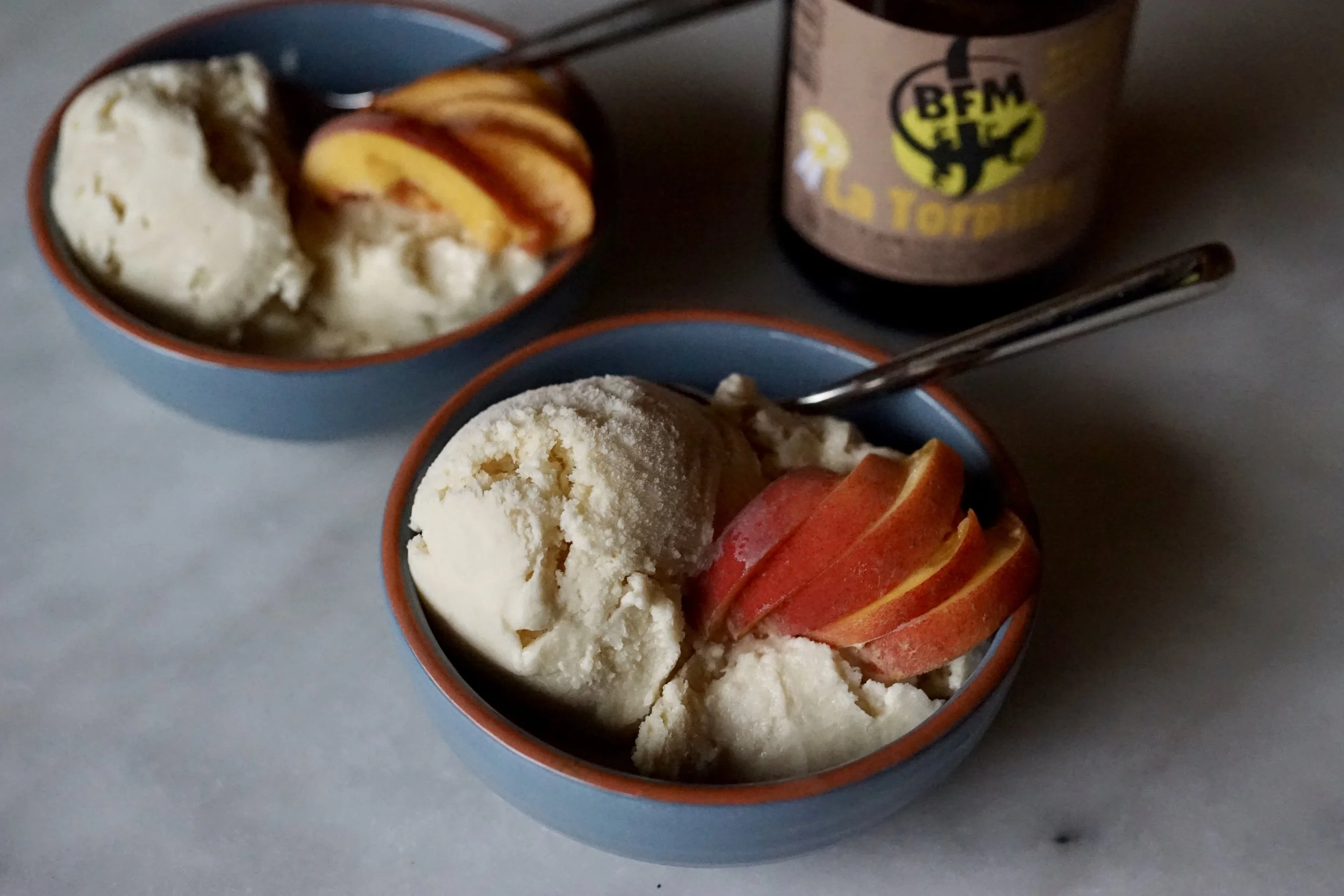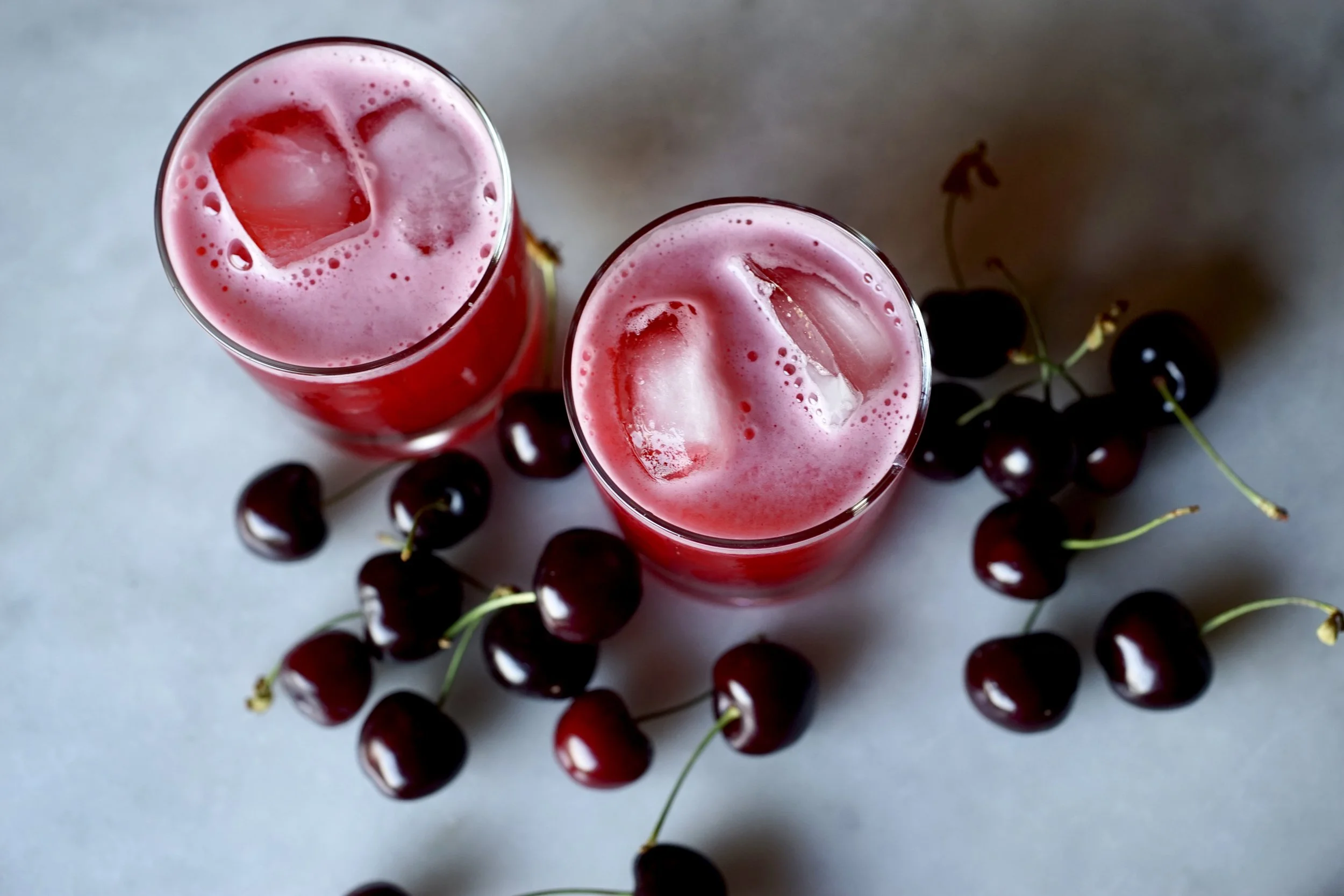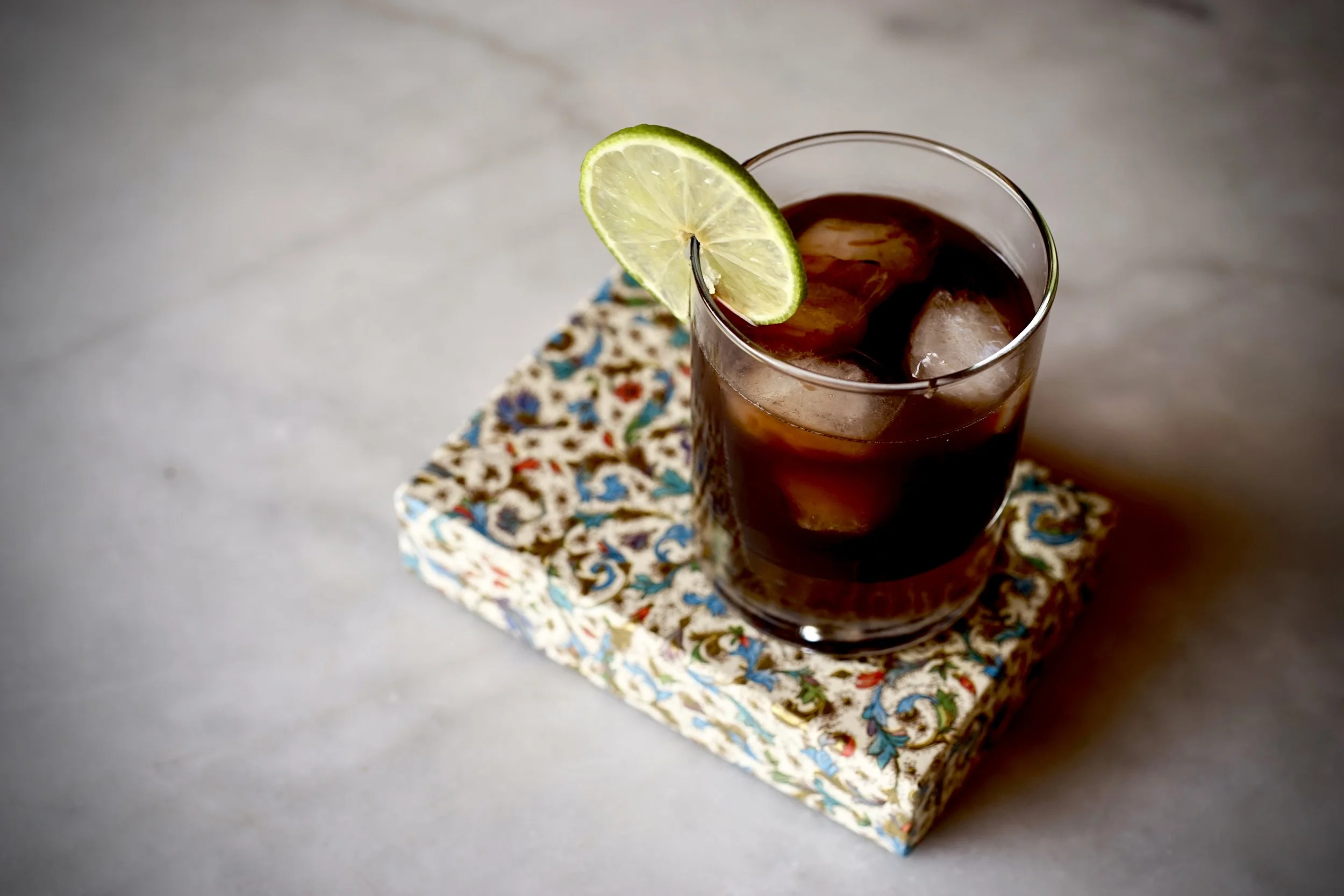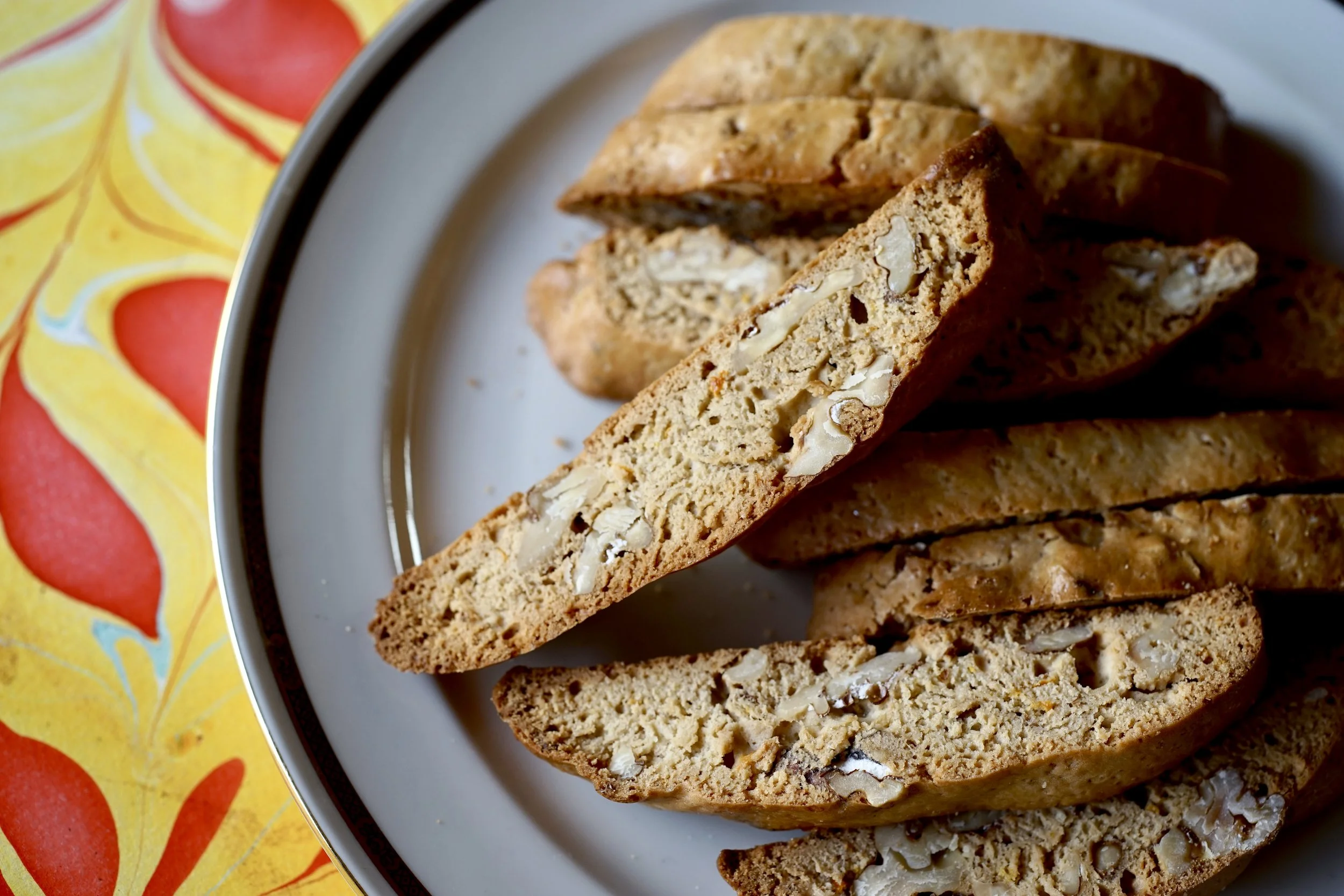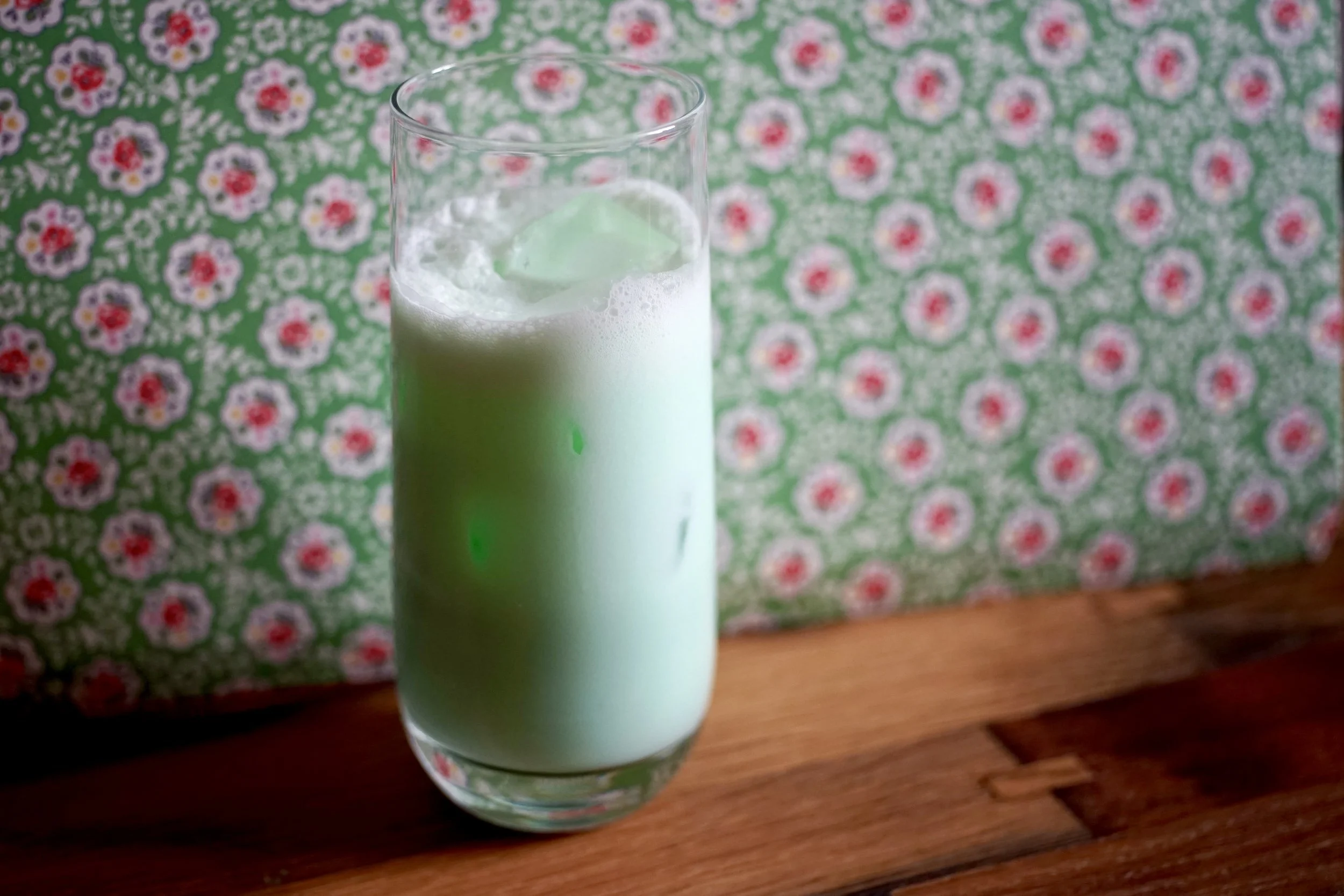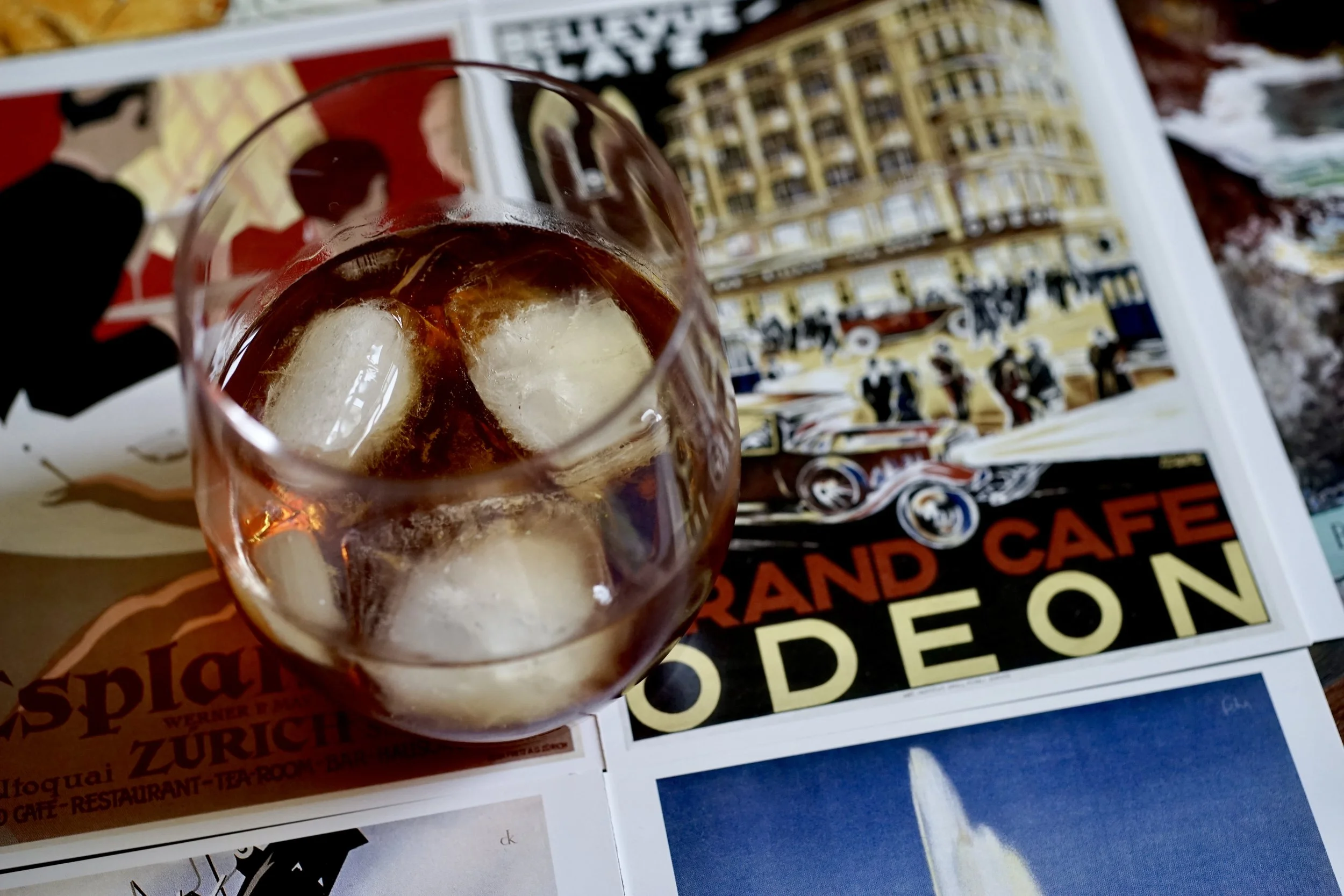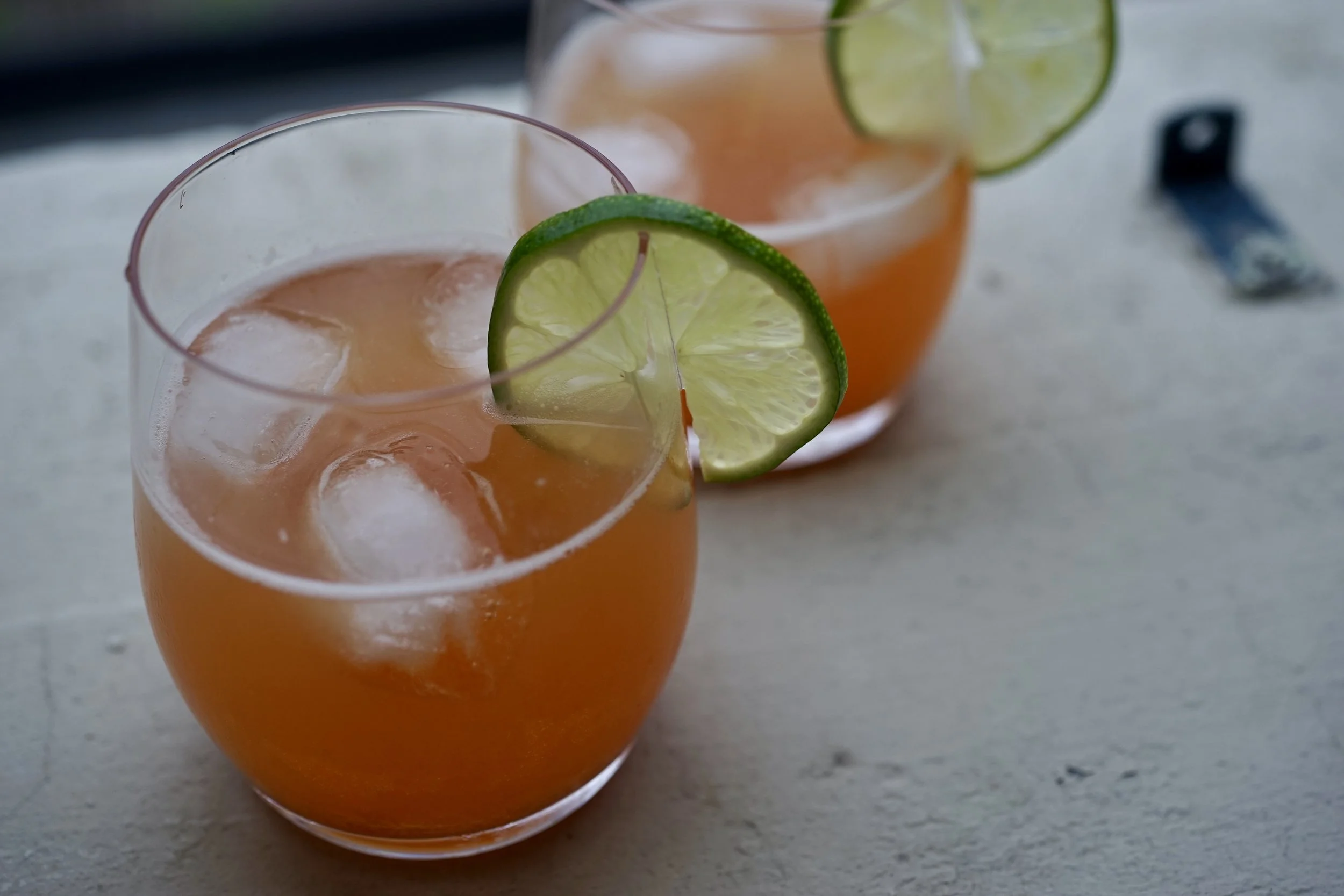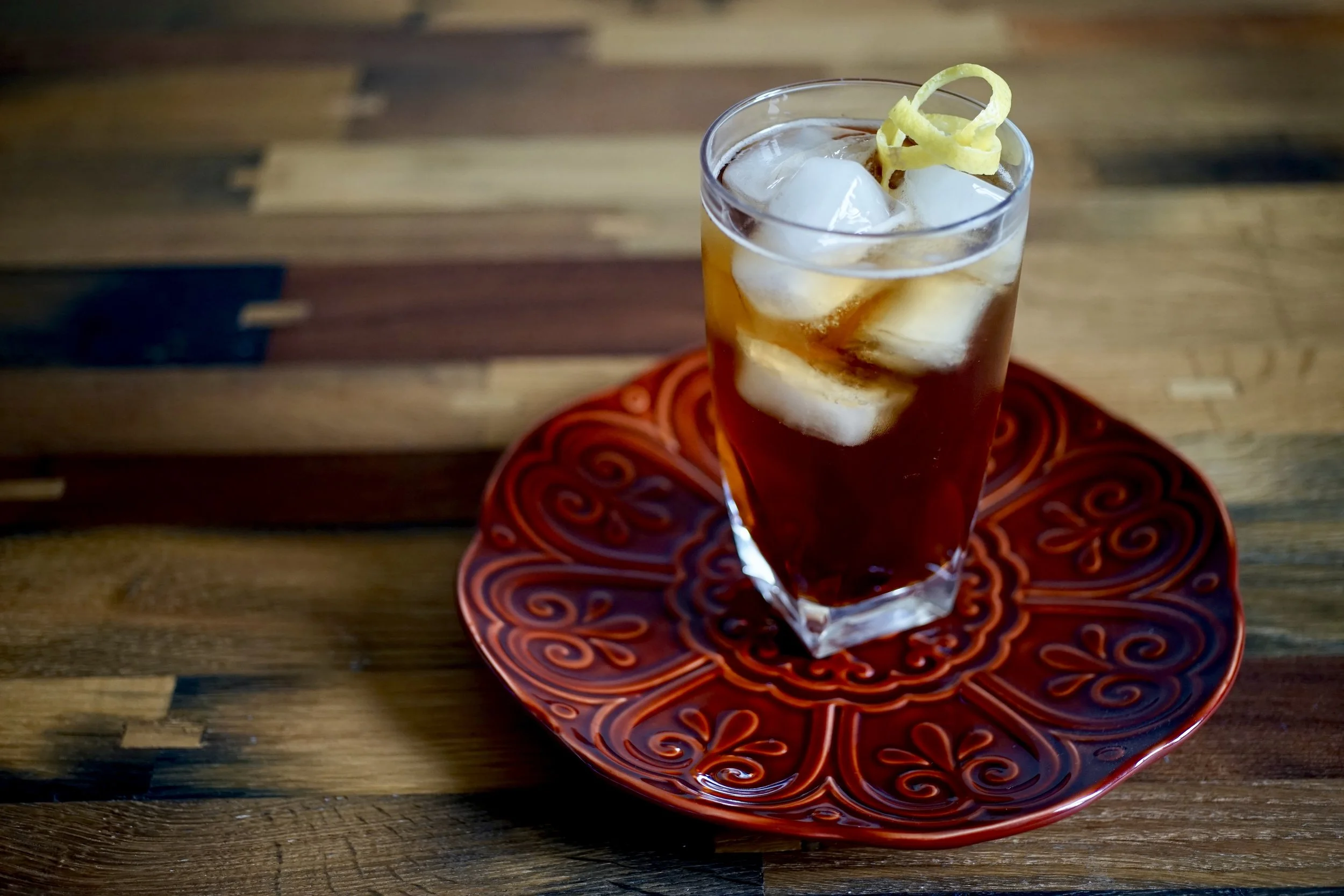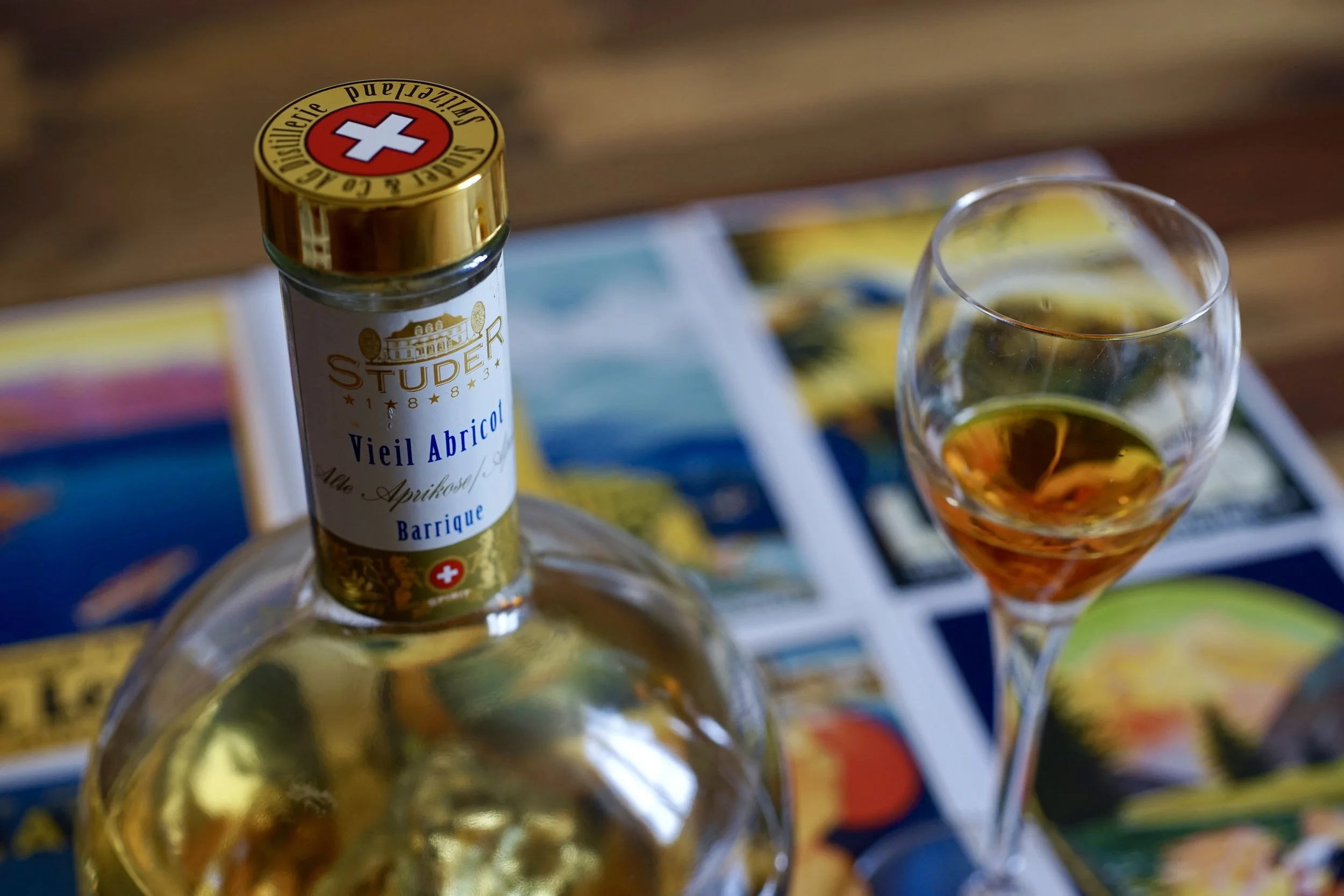Distillery Studer
Recently, I was able to visit Studer and take a tour with the engaging head (and heart) of the company, Ivano Friedli-Studer.
Friedli-Studer grew up along the shores of Lake Lucerne and initially trained to be a Typographer. In the mid-80s he, along with his wife Katharina and a partner, started a graphic design studio. But it wasn't for long, as in 1990 he and his wife took over the distillery—the next generation of Studers at the helm of the family business.
Herr Friedli-Studer, with his stills.
Studer was founded in 1883 and initially produced confectionery rather than spirits, transitioning to schnaps in the early 20th century after a fire at the factory.
They were pioneers in barrel ageing their high-quality fruit spirits. In 1970, they were the first Swiss distillers to produce Vieille Prune, by ageing their best plum brandy. In 1981, Friedli-Studer made a pear version, Vielle Poire Williams, likely the first barrel-aged pear brandy in the world. He also began ageing the spirits in Swiss oak barrels which, over time, have become a popular choice for many other distillers.
Making fruit spirits takes much more time and effort than making other kinds of spirits. Distilling from grains, potatoes and other starches is relatively straightforward, but distilling fruit requires much more attention to the quality of the raw product. A distillery like Studer, aiming for the highest quality fruit schnapps possible, has to have perfectly ripe, flavourful fruit.
The process, as far as I understood, goes something like this:
The fruit is harvested (a lot of Studer's comes from orchards in the Wallis), then waits at the distillery until it reaches its peak ripeness. This is determined by the distillery manager, who cuts open a fruit each day and checks its innards. Once ripe, production begins.
The fruit is washed and set along a conveyor belt so any leaves, twigs, or rot can be taken out. The harvest needs to be processed as soon as possible, so the employees of the distillery work overtime and weekends until all the fruit is safely tucked away in fermenting vats.
Six to eight weeks later, the mash is ready to be distilled. After two or more distillations, some can already be bottled, and the rest gets filled into wooden barrels to develop additional flavour.
When I visited the distillery, they were bottling their excellent absinthe.
(An aside —proper absinthe comes from the Val-de-Travers in the canton of Neuchâtel, where the spirit originated. Distillers in this region are pretty sure theirs is the only one worth drinking, though when I spoke with one proprietor there, he admitted that if he had to have a non Val-de Travers absinthe, he would pick Studer's.)
Here are my impressions of the bottling in video form. That's my lovely sister-in-law Fränzi presiding over the filling machine.
Sadly, the market for a lot of traditional Swiss schnaps is decreasing. Spirits like Zwetschgen, Träsch, and Williams are losing ground to rum, gin, and flavoured vodka. Smart distilleries like Studer have widened their product range, making speciality gins and rums alongside the more traditional Swiss spirits.
It's a shame though, because Switzerland's glorious fruit spirits are delicious and they mix well into many cocktails. Friedli-Studer replaces the gin in his tonic with a shot of Williams, for cool refreshment on a hot day.
Pour the Williams over ice.
Top with tonic water.
Rub the rim of the glass with lemon and drop in.
I used Studer's Vieille Poire, which is slightly sweetened whereas regular Williams usually isn't.

